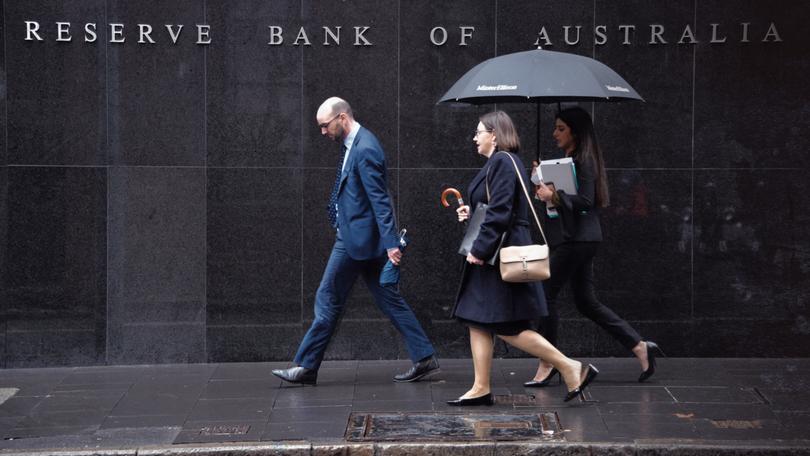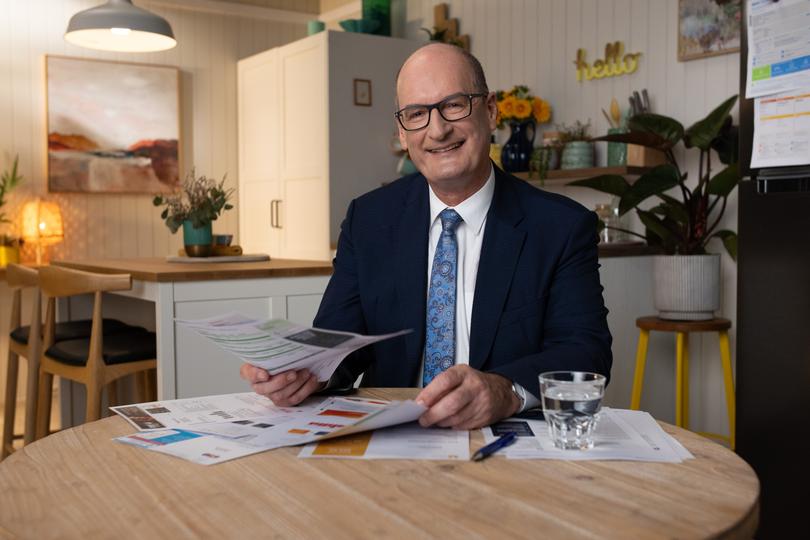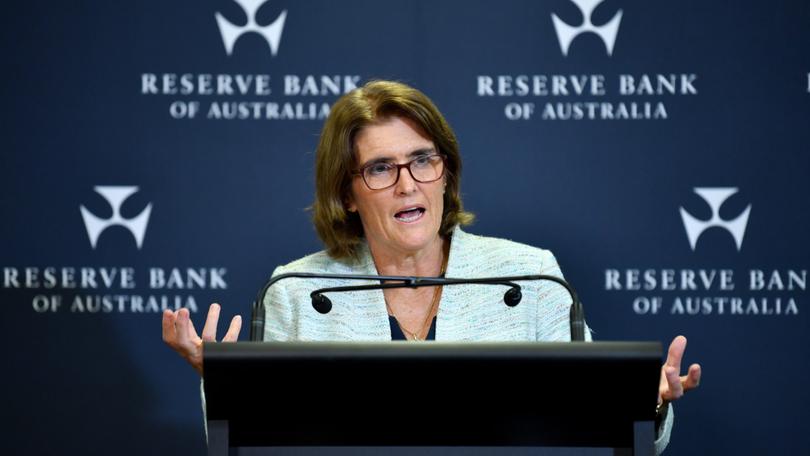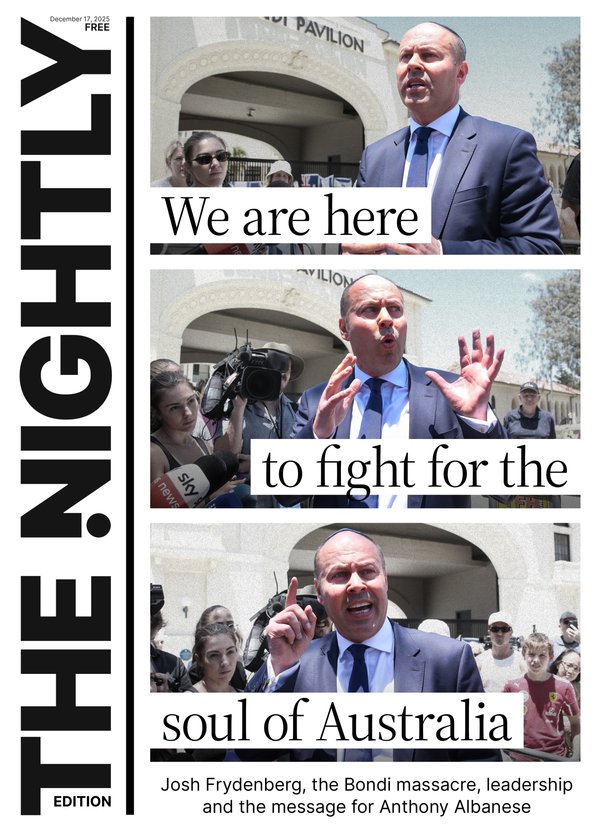RBA interest rates: Live updates from the Reserve Bank of Australia’s June board meeting

Action! Drama! Suspense! Intrigue! Shock! Horror!
Definitely sounds like something you’d want to tune in for, right?
But before you start microwaving the popcorn, dear reader, let us assure you not one of these headline words will make an appearance in the wash-up of today’s Reserve Bank board meeting.
In fact, governor Michele Bullock might as well cut out early, put her feet up and forgo her usual post-rate setting briefing and just replay highlights from May’s event, where such scintillating descriptors as “easing”, “uncertain” and “sustainably” were in heavy rotation after the official cash rate was again left on hold at 4.35 per cent.
Not exactly the stuff of blockbuster movie posters ... but, hey, it’s better than the alternative.
Bullock may have said last month that the board would not flinch at imposing another hike if inflation takes a turn for the worse. But (bar one or two overzealous killjoys) not even the most pessimistic economic boffin believes that’s a real possibility.
For all the uncomfortable squeezing most of us have endured, all indicators show 13 rounds of interest rates hikes since May 2022 are slowly working to bring inflation back to the RBA’s preferred 2 to 3 per cent target range. Sure, like after any toddler who’s slipped away to raid the birthday buffet and drink all the raspberry cordial, it’s been a bumpy road back to normal, with just the occasional temper tantrum when things didn’t go our way.
But there’s also been little in the data between the last meeting and now to suggest the board would be comfortable loosing the purse strings just yet. “Higher for longer”. Get used to hearing that phrase.
It means there’s little chance of immediate relief on the near-term horizon, with families holding an average $500,000 mortgage likely to have to keep finding the extra $1200 in monthly repayments until at least later this year ... or early 2025..
The black clouds still hanging over every belted homeowner is a resilient jobs market and looming stage 3 tax cuts, with the latter set to deliver a boost to disposable incomes from July 1. For most, it won’t be enough to have us reaching for the top shelf at Dan Murphy’s, but it will be on the RBA’s radar ... but not just yet.
For now we’re left waiting ... desperately hoping for a Hollywood hero, only to find it’s another bloody sequel that no one asked for (yes, we’re looking at you Speed 2: Cruise Control).
So, put away the popcorn, pass Granny’s Worther’s Originals and settling in for a long winter’s nap.
Key events
18 Jun 2024 - 01:02 PM
Time for a tough talk with your bank
18 Jun 2024 - 12:39 PM
Once again, the RBA says outlook remains ‘uncertain’
18 Jun 2024 - 12:30 PM
And (unsurprisingly) it’s a hold from the RBA
18 Jun 2024 - 12:22 PM
Cuts still ‘a long way off’
18 Jun 2024 - 12:08 PM
Mortgage pressure mounts, hardship applications rise
18 Jun 2024 - 11:54 AM
Perth records nation’s sharpest decline in home listings
18 Jun 2024 - 11:16 AM
Higher rates are more than just a financial cost
18 Jun 2024 - 11:02 AM
Some extra stimulus, but at what cost?
18 Jun 2024 - 10:45 AM
Want a great deposit rate for your savings?
18 Jun 2024 - 10:35 AM
The $64,000 question ... when will the RBA cut?
18 Jun 2024 - 10:17 AM
More turn to Bank of Mum and Dad
18 Jun 2024 - 10:09 AM
Will they, won’t they? Place your bets
Should you crack the nest egg to pay off your home?
Rising property prices across Australia and higher mortgages will mean that strategies involving using superannuation to pay off the loan will probably become more prolific.
But the numbers don’t always stack up.
Some will choose it. Some won’t have a choice. But for most seeking a wonderful retirement, that won’t be the result they’re hoping to achieve.
There are many strategies that can help you pay off your home loan smarter, and sooner. They include using superannuation’s rules and low tax rates.
READ MORE HERE:
Higher rates are more than just a financial cost
Most of us have had to make some tough money decisions over the past two years to meet higher mortgage repayments.
That takes a toll on every family’s spending power, and there would have been plenty of talk around the dinner table about why mums and dads just can’t afford to do the thinks they used to.
In the fight agaisnt inflation we’ve missed out on swimming or music lessons, holidays, eveings out, a trip to the movies, birthday parties.
The financial cost has been high, and new data suggests the cost to our mental health is the same.
Almost half of respondents to a Compare the Market survey said the cost of living had impacted their mental health, and s taggering 75 per cent had lost sleep over money stress.
Many Australians’ anxiety, depression and eating disorders got worse because of the cost of living - 22, 15, and 2 per cent, respectively.
Meanwhile, people who had never experienced anxiety, depression or an eating disorder before also experienced it for the first time, at 16, 7, and 2 per cent, respectively.
Gen Z and millennials were much more likely to have experienced wellbeing challenges due to financial stress.

Compare the Market’s economic director David Koch said that younger people were among the hardest hit because they were not only facing steeper rents but much higher house prices as well.
“For some people the Australian dream is starting to feel like a nightmare: they’re running as fast as they can but not moving anywhere,” Mr Koch said.
“Let’s say you had your deposit but you’re unable to find a property due to low listing numbers. By the time you’ve found a house you like, the asking price has gone up again, faster than you’ve been able to save.
“It’s a new and stressful situation that has emerged after decades of stunted price growth in previously affordable cities like Brisbane and Adelaide.
“But we also see Gen Xers coming under pressure now their kids are entering their teens or a bit older but are still dependant. They are at a point where they might need to up-size but may not be able to afford a bigger mortgage.”
Things are looking up ... kind of
Some extra stimulus, but at what cost?
The Albanese Government’s stage 3 income tax cuts and cost-of-living rebates on power bills to Australia’s 10.4 million households will begin on July 1.
But what impact will that have on the RBA’s thinking
The central bank;s governor Michele Bullock expects consumers will either save the extra cash or put it toward mortgage repayments, rather than spending.
She doesn’t anticipate the stimulus will have a material impact on the RBA’s inflation forecasts.
“If you hand someone $300 and say ’here’s $300,’ I think psychologically, they think of that differently,” she told a parliamentary hearing earlier this month.
The energy bill rebate “is helping people who clearly are hurting at the moment, but I don’t think it’s material in terms of our forecast for inflation.”
Want a great deposit rate for your savings?
If you’re lucky enough to not have to worry about a mortgage and you have some cash to stick away for a rainy day, half your luck (umm ... and can we borrow a little please?).
As the home loan market remains highly competitive, banks are keeping a watching brief on rates that will lure depositors happy to tuck away their money.
But the deals vary, and as Your Money’s finance guru Nick Bruining explained in a recent edition, you’re unlikely to find the best deal at one of the Big Four.
READ THE FULL STORY HERE:
The $64,000 question ... when will the RBA cut?
You could be better off saving your pennies for a Melbourne Cup punt when it comes to picking the winner on that one.
November seems to be the general consensus among economic experts.
That gives the RBA some breathing space to make sure inflation remains on track to fall back to between 2 and 3 per cent and also get an initial reading on whether stage 3 tax cuts are filtering through to a rise in consumer spending.
ANZ last week became the first of the four major banks to officially push back its rate cut forecast to next year.
Moving its prediction beyond November this year, ANZ now expects the RBA to keep the cash rate steady at 4.35 per cent until at least February, with another cut likely in April or May.
Why so sticky?
We’ve been hearing it for months now - and it’s bound to rear it’s ugly head once again today.
“Inflation is sticky.”
That brings to mind all sorts of images best left to the imagination.
So, what is it? The answer’s not as deep and meaningful as you may think.
First of all, it’s not new. We’ll spare you the full synopsys of a 40-plus page paper the RBA published on the subject way back in 1995 and boil it down to this ...
Sticky inflation happens when prices fail to adjust quickly to changes in supply and demand, leading to persistent inflation.
There you go, easy. It’s also important to know that it’s far more “sticky” when prices fall rather than rise.
We know consumer demand is falling across the retail and discretionary spending spectrum as households have tighened their belts each time interest rates have risen.
So why are some prices still “sticky” and keeping inflation higher than expected?
That’s a whole different lesson and will take a few sock puppets and a few Irish coffees to explain.
More turn to Bank of Mum and Dad
With fresh reports of a rising number of families facing significant mortgage stress, financial advisers are expecting a surge in calls from clients chasing advice on how they can help out their kids.
While the Bank of Mum and Dad has become an established source of funding for some, Your Money’s finance guru Nick Bruining warns that the practice could have long-term consequences.
In some cases, a form of elder abuse is often associated with a request where a refusal to provide assistance might lead to limited or no contact with grandchildren or other personal threats.
READ THE FULL STORY HERE:
Will they, won’t they? Place your bets
The Reserve Bank will likely hold its key interest rate at a 12-year high today as it tries to restrain consumer prices that have been underpinned by an ultra-tight employment market.
It will mark the fifth-straight hold since it last hiked rates in November.
Australia’s policy meeting follows a highly-anticipated decision by the US Federal Reserve last week, when chair Jerome Powell signalled he wasn’t in a rush to ease monetary policy even after a soft inflation report.
RBA governor Michele Bullock is likely to draw on the same playbook by retaining her mild hawkish bias in acknowledgment of sticky consumer prices.
She says the board needs to be confident that price growth is moving sustainably back to the 2 to 3 per cent target and as a result the board “isn’t ruling anything in or out”.

That has some homeowners worried as they face the prospect of another hike just as more seek support from their banks for hardship help.
“The board is likely to consider the option of a rate hike given the stronger-than-expected April inflation data,” said Bloomberg economist James McIntyre.
“We still think the next rate move will be a cut, but the RBA is unlikely to start easing until later in 2H24.”
Since the RBA’s last meeting, data indicate that Australia’s economy has slowed markedly, with GDP contracting on a per-person basis, while tepid retail sales reflect downbeat consumer sentiment. Stubborn inflation and high borrowing costs are largely to blame.
At the same time, the labour market remains tight with unemployment at 4 per cent, giving policymakers optimism that they can engineer a soft landing.
